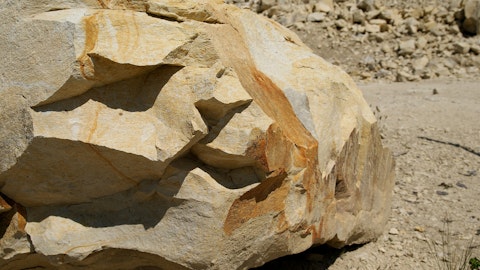Jerry Revich: What I wonder if you could just pick up the discussion where you just left off in terms of the carryover effect of the mid-year price increases? So essentially, with the bulk of the benefits coming in 2024. Can you talk about what level of price carryover effect will we just naturally have in ‘24 before taking into account the January 1 price increase based on the magnitude and the traction of the mid-years?
Ward Nye: Yes, Jerry, that’s a great question. I don’t want to go into specific details on that yet because, obviously, we will come out early next year and give good guidance for 2024. But I think several things are worth thinking, Jerry. One, do I think it will give us a nice carryover into ‘24? The answer is yes. Do I think we will end up seeing good price increases in January that will help build on that? The answer to that again is yes. So I think what we’re seeing is a pricing cycle right now that’s going to be better than the pricing cycle that you’ve typically seen even separate and apart from what has been a pretty high inflationary market. In other words, if you go back and look at what aggregates were doing at a normal rhythm and cadence even prior to the last, say, 1.5 years.
I think what you can expect going forward is going to outkick that coverage that you would have historically seen. So again, do I think midyear help with that? I do. Do I think the price increases that will come back in, in January will help build upon that? Yes. And do I think we’re going to continue to see good sticking on the midyears that we put in place this year. And the answer to that is, again, a resounding, yes, Jerry. So I think from an outlook perspective, pricing has always been something that people have looked to Martin Marietta and said it broadly works. And I think what they are going to come to the conclusion of is it’s going to work in the future even better than it has in the past. And I think that’s saying something.
Jerry Revich: And Ward, in one of the prepared materials that you folks have for the call, you spoke about pretty low pricing starting point in California on the assets that you just acquired. Can you just talk about the pricing path and the decision not to put even more substantial price increases considering where the starting point is for that asset?
Ward Nye: So I guess I just want to make sure that my writing was clear in some instances, maybe wasn’t. What we’re saying is we’ve seen, since we bought that business, ASPs up around $4.50 a ton in that marketplace. And by the way, that was a marketplace that – and we’ve talked about it, Jerry, it was below Martin Marietta corporate average in a state that typically sees higher pricing. So seeing aggregate up since we’ve acquired that business about $4.50 a ton. We think given the barriers to entry, we think with the reserve depletion plays at the California sees generally, that’s a very responsible place for us to be on moving that. The other thing that I’ll tell you is as we’re sitting here now, we’re expecting probably another $2 a ton when we start getting closer to January 2024.
So just as we’ve seen in different markets, when we bring the commercial philosophy to a business over an extended period of time, the pricing and the commercial aspects of the business tend to work quite well. And again, I haven’t been surprised by anything that we’ve seen in California, and I’m pretty pleased with where that business is going. And the other piece of it, Jerry, that you’ve watched very carefully is our team has been superb at managing what we’ve had in discontinued operations since we bought the business. So as you can tell, there is very little left now in disc ops. And again, we’ve been very intentional in skinning that business down to what we do, what we do best, very focused and our work there, frankly, is almost done and the commercial aspects of clearly work.
So Jerry, I hope that helps.
Jerry Revich: Absolutely. Thank you, Ward. And can I ask just one last one? Jim, in terms of COGS per ton for aggregates, it looks like they were up about 14% year-over-year in the second quarter. I’m wondering any items that you’d call out because diesel, I think, should have been a tailwind. Obviously, volumes were down, but any other factors that impacted…
Ward Nye: Let me ask Jim to respond to that. So what you’re going to hear is energy is a good guy. And then there is some other things that are a bit of a headwind.
Jim Nickolas: Yes. No, the non-energy cost inflation is still with us, as I indicated in my prepared remarks, but things that are also above and beyond that, we did ship more tons via rail this quarter and the rate per ton on those rails shipped stone was higher as well. So that had a disproportionate effect. And again, it’s only quarter so it’s an outsized effect but that was a big piece of it as well as additional repairs costs that we incurred in the quarter. So those are the two things that will probably help drive that number up a bit, Jerry.
Jerry Revich: Got it. Thank you. And congrats to the team.
Ward Nye: Jerry, thanks so much. Take care.
Operator: Thank you. The next question comes from Garik Shmois of Loop Capital. Please go ahead.



